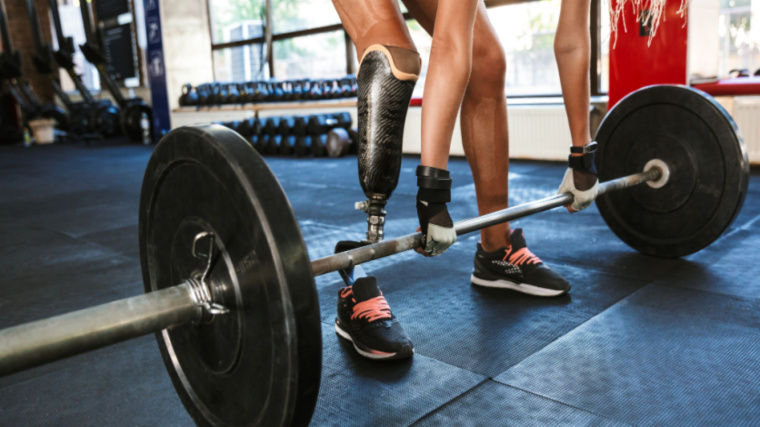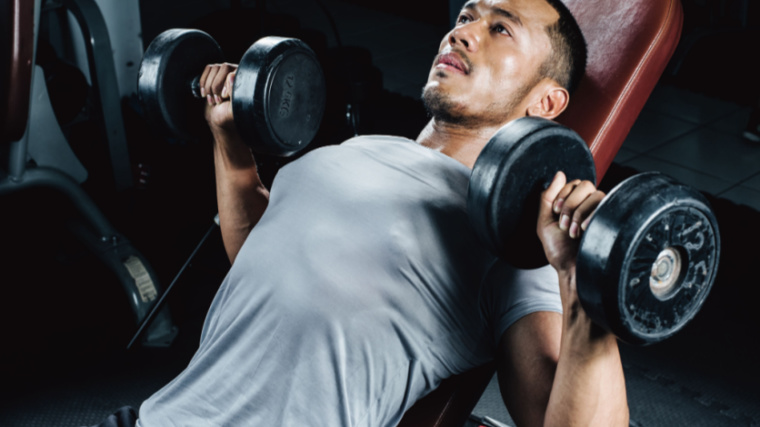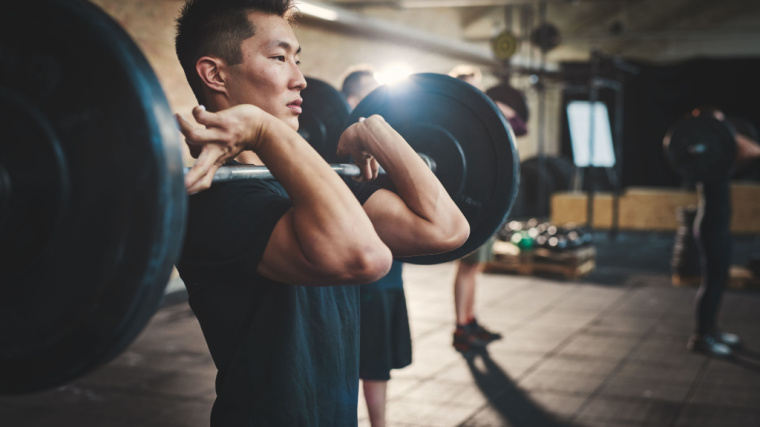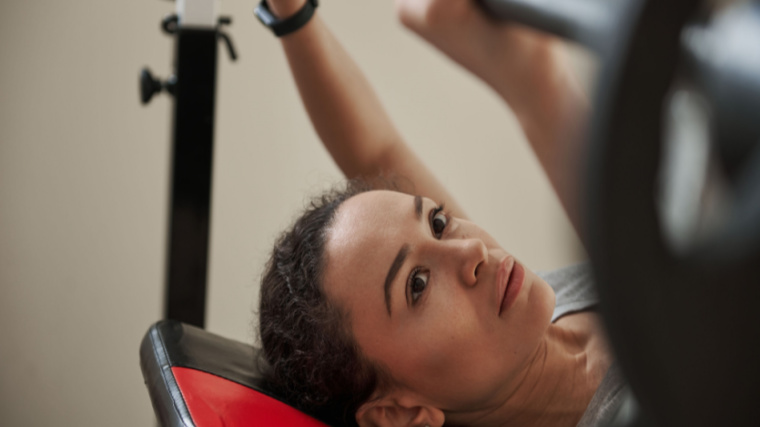Something feels off in your program. You’re not exactly plateauing, but you’re not leaving the gym feeling good, either. Sometimes that nagging sense of something being not quite right about your gains has nothing to do with the gym itself. Maybe you’re not sleeping or eating enough. You might be stressed at work or at home.
Other times, what’s holding you back in the gym might be any number of subtle strength mistakes. Any number of underrated, under-programmed training essentials may be standing in the way of you and your new PRs (personal records). You might be in such a rush to get to the barbell that you’re skimping on your warm-up. Your all-time nemesis might be cardio, in which case those 12-rep squats coming up in your program may feel insurmountable — no matter how strong your legs are.

Maybe your deadlifts come off the ground easier on one side than the other or you just can’t quite get into position for your overhead squats. Either way, it’s negatively impacting your training — and maybe even your motivation. Whatever’s feeling off about your program, taking a breather to figure out what the issue is can help you fix it. Check out these common strength mistakes so you can start fixing your program.
Common Strength Mistakes
- Side-to-Side Strength Imbalances
- Instability During Big Lifts
- Lack of Endurance for Higher Rep Sets
- Poor Positioning in Big Lifts
- Boredom With Your Program
Side-to-Side Strength Imbalances
You don’t notice anything off when you’re working with relatively light weights. But the farther along you get in your program, the heavier you start bench pressing. That’s when one of your arms starts locking out before the other. When one side is fighting to finish the lift before the other, you’ve likely got some strength imbalances to iron out.
This happens in other lifts, too. If you’re a leftie, your right hand’s grip might give out during deadlifts a lot faster than your left hand. Your squat feels fine until you film yourself for a form check and notice that you’re more than a little lopsided. When one side feels stronger than the other, it’s not just your lifting efficiency that suffers. You also may run the risk of injury.
The Fix — Unilateral Training
You might be more likely to run into strength and muscle imbalances if you generally work with barbells. All of this bilateral training — where both sides are working in unison — is great for building max strength. For Olympic lifters and powerlifters especially, this is a must for competitions. The major focus of these programs will be barbell-oriented to build the strength you need for competition.

[Read More: Our Favorite Forearm Workouts, + the Best Forearm Exercises]
Even so, when your lifts get lopsided — or hopefully, before this starts happening — integrating unilateral work can help. Unilateral training involves lifting with one side of your body at a time, using the asymmetry in your movement to make your overall body and strength more symmetrical. To perform unilateral work, use implements as wide-ranging as kettlebells, dumbbells, battle ropes, and cable machines.
Instability During Big Lifts
Especially when you’re training for power and strength all at once — as with Olympic lifters and CrossFitters — stability will be a huge part of your training. You’ll need core strength and even foot strength to keep your balance when you’re explosively lifting a barbell.
Shifting from side-to-side inappropriately will leak force out of your lift — force that you could otherwise channel into locking out the weight. Unilateral training may help a lot with this. By nature, it’s less stable than working with a barbell, so it can help. But that’s not the only way to help out here. Lateral training can also be a huge boon to your stability game (more on how to do this below).
The Fix — Lateral Training
Lateral training doesn’t just involve moving one side at a time — it’s about actually moving in the frontal plane (side-to-side). Walking lunges are unilateral movements because you’re working one leg at a time. But the direction of your movement is still oriented forward-and-back rather than side-to-side. On the other hand, lateral lunges — also called side lunges — are both unilateral and lateral movements. You’re working one side at a time (unilateral) and actually moving from side-to-side in the frontal plane (lateral).

Lateral lunges, lateral step-ups, side shuffles, and lateral sled drags can help build the core and foot strength and stability you need during your big barbell lifts. They’ll take you out of your front-to-back comfort zone and teach your body how to remain stable when gravity and your balance are trying to pull you off to the side. This will come in extra handy during snatches and squats on those days when your walk out just doesn’t feel right.
Lack of Endurance for Higher Rep Sets
Powerlifters often joke that a set of anything beyond five reps is a cardio workout. And in terms of how tough it can get to breathe through those sets of eight to 12 squats, it certainly can feel that way.
Even when your ultimate goal is max strength, building a base level of strength at high volumes irons out your lifting technique. The more solid the foundation of your form, the easier it can be to progressively overload at lower rep ranges.
If your program is calling for higher-volume compound lifts and your lungs are giving out before your strength, consider adding conditioning work into your program. It doesn’t have to be the mainstay of your work to help you bang out those extra reps.
The Fix — Conditioning
Conditioning doesn’t have to be running endless miles on a treadmill or even riding an exercise bike. You can combine your strength and cardio training with moves like box jumps, burpees, battle rope waves, wall balls, and kettlebell swings. Because these exercises are so intense, you won’t even have to do them for a long period of time. High-quality conditioning sessions can last anywhere from five to 20 minutes long.

If that seems like a long time for someone who gets winded after a set of eight deadlifts, don’t panic. You can start small — think a four-minute Tabata workout alternating between 20 seconds of kettlebell swings and 10 seconds of rest. Over time, you’ll build your work capacity and it will carry over into your barbell training.
Poor Positioning in Big Lifts
When your linear progression starts feeling more like an impossible grind than something that’s helping your progress, your strength level isn’t always to blame. Sometimes, it’s a lack of ability to get yourself in the right position, especially at the end ranges of a lift.
For example, you might be able to front squat and overhead press very heavy weight. But when it comes to combining them into an overhead squat, you just can’t get into the position you need. Maybe your shoulders hate the snatch-grip position, or maybe your hips can’t hack the bottom of a squat with the weight so far above your head.
Your mobility is arguably just as important — if not more so — for your ability to successfully lift heavy weights. If you can’t get into the proper position, you’re not going to be able to pull it off.
The Fix — Mobility Work
It might be the case that you just can’t seem to get into the right position to begin with, no matter what the weight on the bar. Many lifters struggle with the low bar back squat position because they don’t have enough mobility in their shoulders to pin the bar securely. Others are lacking the hip and ankle mobility needed to sink into a deep squat without their heels shifting.

If you’re consistently skimping on your dynamic warm-up and movement prep, you might be missing out on positional strength. Over time, unloaded and lightly-loaded mobility work can be a game-changer for your strength goals. Try adding mobility exercises to your warm-up that are specifically geared toward the big lift you’re having difficulty with.
Hip 90/90s and deep lateral squats, for example, can help open up your hips and ankles before heavy squat sessions. Scapular slides and scapular circles can help you develop the thoracic mobility you need for overhead squats.
Boredom With Your Program
Getting bored with a program is one big reason why many people have trouble sticking with a consistent training regimen. An eight-week program might not seem that long on paper, but programs with gradual progressive overload plans are by nature quite repetitive. That kind of repetition can get boring pretty quickly — it’s okay to admit it.
This boredom factor is a real consideration even for lifters who love and are dedicated to their sport. And while there is a lot of value in sticking with a program regardless of boredom, it helps to find a balance between “I’m so bored and getting unmotivated” and “I know that sticking with this plan will help me get my gains.” Strategically changing your program — just a little bit — can be a solid solution.
The Fix — Program Modifications
When you’re first starting out, it might seem that “real” or “serious” lifters are the ones who stick to their program no matter what. They’ll do their training exactly as written no matter how they’re feeling. But actually, the more advanced you are as a lifter, the more likely you are to know how to listen to your body and modify your workout according to how you’re feeling. You can extend this logic into strategically adjusting your program to meet yourself where you’re at.

Changing your program when you’re bored or frustrated can include anything from swapping out one exercise for another to a total program change. Maybe you absolutely dread close-grip bench presses because you find them boring and hate waiting around for the weight bench. Try subbing out close-grip push-ups in your actual workout and maybe even in your program.
You don’t want to toss a whole extra plate on the bar just because your pre-workout kicked in stronger than usual. But giving yourself the flexibility to go up five or 10 pounds when you’re feeling good — and vice versa — can help keep your program responsive to your needs and therefore, a lot more dynamic.
How to Program Around Common Strength Mistakes
Your gym buddy is on you to use dumbbells more often, because your right arm is definitely a lot stronger than your left. But neither of you are quite sure how often — and how intensely — you should incorporate that unilateral training into your program.
[Read More: How to Do the Dumbbell Bench Press]

The goal of fixing your strength mistakes is finding that sweet spot between adequately addressing your weak points and also staying focused on the big picture. Your main goal might be to get strong or build muscle during this training cycle. You don’t want your conditioning work to suddenly overpower your program and take over your recovery needs. Ditto with your lateral exercises — you don’t want them to be so hard and heavy that you won’t be able to go as hard in your big lifts. Here are some suggestions for how to start incorporating some fixes into your program.
Unilateral Training
If you’re already performing accessory exercises, transition one or two of them at a time to unilateral versions of what you’re doing. If you’re especially imbalanced, consider making all or most of your accessory moves unilateral for a training cycle or two. For example, lat pulldowns will become single-arm lat pulldowns and front squats can become front-rack split squats.
Lateral Training
Swap out one or two of your usual accessory movements for a lateral version of the move. Reverse lunges might become lateral lunges, for example. If there aren’t any accessory moves that you can easily swap with a side-to-side version, consider adding a few sets of lateral exercises into your warm-up. Don’t focus on bearing a lot of weight here — you can stick to bodyweight movements.
Conditioning
When your main focus is strength or even muscle-building, you’ll generally want to include conditioning work after your usual strength training. This keeps an emphasis on strength. You’ll be performing that part of your workout when your body has the most energy. Start small by adding a small amount of conditioning work — maybe a 200-meter row — either to your warm-up or cool-down.

[Read More: The Best Bodyweight Exercises, + Workouts and Tips From a CPT]
Up the ante by gradually increasing the time or intensity of your conditioning training. You’ll only want to step up one variable at a time. If you’re making your conditioning workout longer, keep it at a level of intensity you’re used to and build up from there. When you want to make it more intense — upping the weight of your thrusters, for example — keep the time or rep count the same until your body adjusts.
Mobility Work
The most common way of integrating mobility work into strength programs is by adding these exercises to a dynamic warm-up. Select three or four mobility exercises for joints that are lagging during your lifts. Can’t get the bar into a proper overhead position? Time to work on your thoracic mobility.
For example, hip and ankle openers are often particularly helpful when you can’t get comfortable in the bottom of your squat. Perform two to three sets of 15 to 20 reps — or 30 to 45 seconds, depending on the exercise — per move during your warm-up.
But mobility work isn’t just for your warm-up. You can also superset a mobility move with bigger lifts. For example, try performing face pulls between heavy bench press sets to help keep your lats awake, engaged, and mobile during your lifting session.
Program Modifications
Keep careful track of how your main lifts are progressing as you make adjustments to your program to keep yourself engaged. Your mistakes — and your boredom — won’t magically cure themselves once you start making these program changes. That said, you don’t want to be so unfocused that you’re stalling on your progress altogether. Even if you’re pretty confident in your fitness level and abilities, start with limited changes and build up from there as needed. This allows you to keep to the spirit of your program while also keeping yourself excited to roll up to the gym.
Don’t Make the Same Mistake Twice
The most common strength training mistakes aren’t the epic squat fails that make their rounds on social media. While practicing safe lifting is generally crucial, it’s just as important to keep an eye on the little details in your everyday training. Instead, the strength mistakes you make most often are the ones you might not even notice.
Watch yourself for those moments when you shift from side-to-side unexpectedly, or when you just can’t seem to get into a comfortable front-rack position. Once you identify these seemingly small weak points, adjust your program accordingly. It doesn’t take a lot of huge tweaks to help your lifts in a huge way.
Featured Image: Alfredo Lopez / Shutterstock